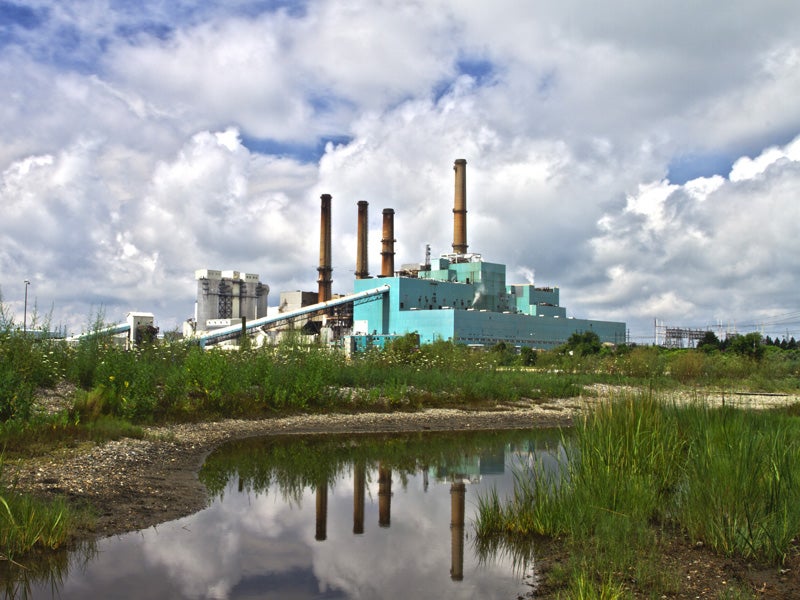Don’t Let Dirty Industries Sell Our Health Down the River
The EPA—prompted by an Earthjustice lawsuit—is considering stronger rules to keep coal-burning power plants from polluting our rivers, lakes and streams.

This page was published 10 years ago. Find the latest on Earthjustice’s work.
People who don’t follow environmental issues closely may not realize that where we get our electricity is the most consequential decision we make in terms of whether we have clean air and safe drinking water or not. Power plants, especially coal-burning power plants, are the largest polluters of our waterways by far—more than the next nine largest industries combined.
The rhetoric around whether to force coal-burning power plants to clean up their act too often falls into the old false dichotomies—jobs vs. environment, people vs. profits. But what if it wasn’t so black and white?
What if I told you that we can severely limit the amount of pollutants like mercury, arsenic, lead and other toxic chemicals power plants can dump into America’s waterways, while at the same time creating hundreds of millions of dollars in benefits each year? What if I also told you that we can do this at a cost of less than 1% of the average power plant’s revenue?
If you don’t believe me, just take a look at this report Earthjustice and our allies released today detailing the enormous benefits of stronger water toxic standards for power plants.
The only catch is that after waiting more than 30 years for the EPA to strengthen its standards (and only after litigation brought by Earthjustice and our allies), the agency is seriously underestimating the economic value of the health benefits that would result from stronger pollution safeguards.
Here’s a peak at the facts:
- FACT: Coal-fired power plants are the largest discharger of toxic water pollution in the U.S., dumping more than 5 billion pounds of pollutants into our waters each year.
- FACT: Power plant wastewater has contributed to more than 23,000 miles of contaminated rivers, fish too polluted to eat in 185 bodies of water, and the degradation of 399 water bodies that are used as public drinking water sources.
- FACT: EPA is putting the finishing touches on a rule that could put a stop to all of this toxic dumping if it sets standards that require power plants to use cost-effective, widely available wastewater treatment technologies that some U.S. power plants already have in place.
- FACT: This rule would create massive financial benefits in the form of improved health and recreational opportunities for communities throughout the country—especially those closest to these plants. It would also create additional benefits, such as eliminating toxic pollution from watersheds that are home to drinking water supplies and fragile marine ecosystems.
- FACT: The robust protections for human health and watersheds in this proposed rule are affordable for the industry. The U.S. electric power industry raked in more than $375 billion in revenue in 2013.
I hope the EPA carefully considers our report and uses this opportunity to take another major step toward ensuring clean, safe water and healthy watersheds by issuing a strong power plant water toxics rule this fall. Power plant water pollution has affected families and communities throughout the United States for far too long. It would be a shame to let dirty power plants continue to sell our health down the river.
Earthjustice’s Clean Energy Program uses the power of the law and the strength of partnership to accelerate the transition to 100% clean energy.